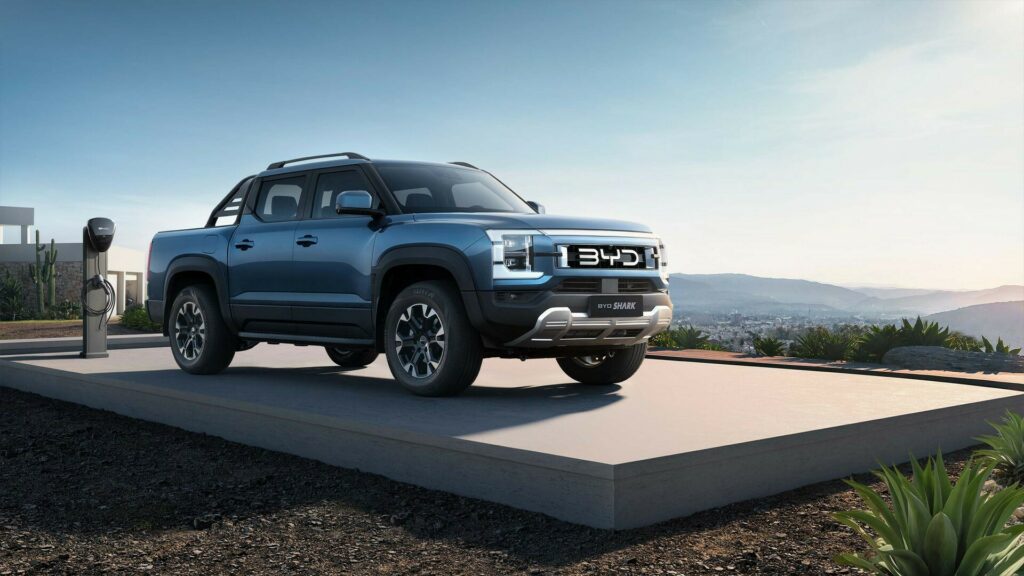
- The Chinese car giant has reportedly reduced output at several of its production plants.
- One unnamed source says the cuts have been made as sales haven’t met expectations.
- BYD dealers have an average of 3.2 months of supply, more than double the average.
BYD’s growth has been exponential, and last year, it was the sixth-largest carmaker by volume, selling an incredible 4.27 million vehicles. This year, BYD is targeting 30% growth and is pushing to sell as many as 5.5 million cars. However, unnamed sources claim the company’s expansion has slowed in recent months, and it has reduced production at some of its factories.
var adpushup = window.adpushup = window.adpushup || {que:[]};
adpushup.que.push(function() {
if (adpushup.config.platform !== “DESKTOP”){
adpushup.triggerAd(“0f7e3106-c4d6-4db4-8135-c508879a76f8”);
} else {
adpushup.triggerAd(“82503191-e1d1-435a-874f-9c78a2a54a2f”);
}
});
It’s claimed that BYD has cut night shifts at some of its factories while also reducing output by at least a third. These changes have reportedly been made at four factories, at least. In addition, BYD is believed to have suspended plans to set up several new production lines.
Read: This Country Faces A Cheap EV Invasion That Could Destroy Its Auto Industry
Sources speaking with Reuters did not specify the exact scale of the production reduction, but one said the moves were being made because BYD’s sales have failed to meet its targets, while another suggested the company is looking to reduce costs.

Growing Pains
In April, the growth of BYD’s global output had slowed to 13% year-over-year, and in May, it slowed to 0.2%. These were the slowest growth rates the company has seen since February 2024. In addition, the China Association of Automobile Manufacturers’ data has revealed that BYD’s average output in April and May was 29% lower than in the fourth quarter of 2024.
BYD’s incredible expansion has put many legacy car brands on notice in key markets worldwide. With an ever-growing range of competitively priced models, BYD has triggered an industry-crushing price war. While this has helped to drive up sales, it has also increased inventories. In China, BYD dealers held an average inventory of 3.21 months, significantly above the local industry average of 1.38 months, and the highest of all brands in China.
One major BYD dealer was recently forced to close 20 dealerships across the country. Soaring inventories have also prompted the China Auto Dealers Chamber of Commerce to tell carmakers to stop offloading so many cars and to set production targets in line with sales.
A Profitable, Yet Bumpy Ride
var adpushup = window.adpushup = window.adpushup || {que:[]};
adpushup.que.push(function() {
if (adpushup.config.platform !== “DESKTOP”){
adpushup.triggerAd(“bb7964e9-07de-4b06-a83e-ead35079d53c”);
} else {
adpushup.triggerAd(“9b1169d9-7a89-4971-a77f-1397f7588751”);
}
});
In March this year, BYD announced that its annual revenue for 2024 reached 777 billion yuan ($108.3 billion), surpassing Tesla’s $97.7 billion. This marked a 29% increase from the previous year, driven largely by strong hybrid vehicle sales, positioning BYD as the new leader in the electrified market.
var adpushup = window.adpushup = window.adpushup || {que:[]};
adpushup.que.push(function() {
if (adpushup.config.platform !== “DESKTOP”){
adpushup.triggerAd(“bb7964e9-07de-4b06-a83e-ead35079d53c”);
} else {
adpushup.triggerAd(“9b1169d9-7a89-4971-a77f-1397f7588751”);
}
});


